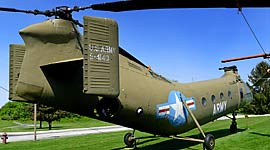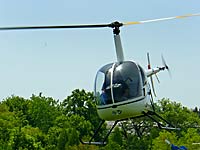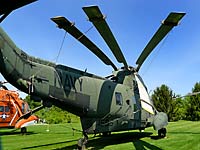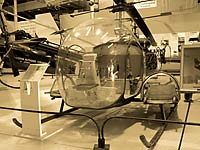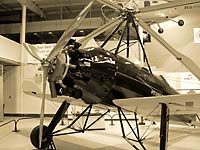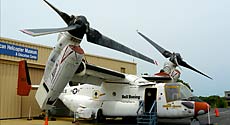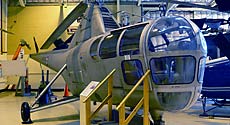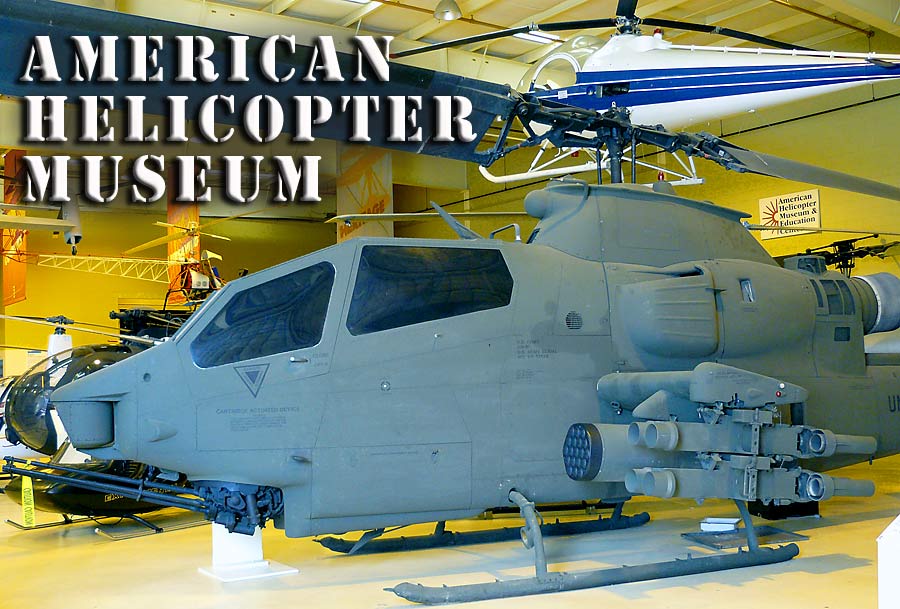
American Helicopter Museum
The American Helicopter Museum is located at the West Chester, PA just southwest of Philadelphia.
The American Helicopter Museum is unique in that it focuses strictly on helicopters and other rotorcraft. Some rotorcraft are very significant like the Bell Boeing V-22 Osprey prototype, the Pitcairn Cierva Autogyro, and the Sud Ouest Djinn. The V-22 Osprey was a bold departure from both fixed wing and conventional helicopter design concepts. The Pitcairn is a very early autogyro and the museum states that it is the oldest surviving American rotorcraft of any kind. The Sud Ouest Djinn looks fairly conventional but its propulsion system is not. This helicopter uses bleed air off the gas turbine engine which is routed up through the rotor blades and expelled out the tips to spin the rotor blades in a jet like fashion. The major benefit of that design was with no direct shaft torque to the rotor a tail rotor was not necessary. The Boeing 306 is the only helicopter of its kind and was said to have been used by Boeing to get their feet wet using composite materials for aircraft construction.
You'll notice that several of the galleries are done in monochrome. The overhead floodlamps cast a somewhat yellow hue (A friend of mine who does the lighting at the Holocaust Museum thought they were using sodium bulbs). You don't really notice it when you are there as your brain adjusts for the lighting as it does for the greenish hue of fluorescent bulbs. I wasn't able to recover enough of the original colors using Photoshop so that is why they are not in color. It's a shame because that Pitcairn is an absolutely gorgeous restoration. The covering and paint work are first class. My photos don't begin to do it justice. You've really got to see the autogyro in person. You walk in the place and See the Pitcairn Autogyro and say "Wow!". The Bell H-13 Sioux like the helicopters you see on MASH was very well done too. Fortunately the closer I got to the doors and daylight the more natural the colors in the photos appeared.
My favorite American Helicopter Museum Exhibits were a toss up between the Pitcairn Autogyro and the Bell AH-1 Cobra Gunship. The Cobra Gunship's a really aggressive looking machine and seemed to be the most complete Cobra I've seen in a museum so far. The Robinson R22 Helicopters just make you want to own one! However I'm not so sure I'd want to insure one. In my quest for more info I found this page that listed insurance for a Robinson R44 at $11,000 per year!!! What an eye opener! It is a very interesting page as it details an owner's honest costs to maintain his Robinson R44 keep his helicopter and to keep up with unexpected airworthiness directives.
Several of the rotorcaft at the American Helicopter Museum are set up so that you can climb inside. You can enter and tour the V-22 Osprey, a Hughes Osage, and the Bell UH-1 Huey. I think it really adds to the experience to be able to sit at the controls of an aircraft. It also gives you a feel of how large or small inside they really are.
The volunteers and staff at the American Helicopter Museum were quite friendly and eager to field your questions. Also I found if one person didn't have an answer he'd find someone who did. The folks in the gift shop were especially helpful and talkative. Seeing how the museum staff used helicopter tail rotor blades for restroom signs shows these folks have a good sense of humor. There was a nicely laid out play area for kids and they seemed fairly kid friendly. One exhibit that I forgot to photograph is a full sized real helicopter simulator. It looked like a fun way to blow 15 bucks. One exhibit consisted of a stand alone rotor hub and short blades. There were two manual levers to control the collective and cyclic on the hub. Being able to see and manipulate how they manipulated the rotor pitch took a lot of the mystery out of how helicopter flight controls work.
The American Helicopter Museum is located on the grounds of a small general aviation airport. What was neat about this is that there was a lot of activity during the day. Light planes were arriving and leaving throughout the day and the helicopter flight school was conducting training and they were practicing hovering and touch and goes just outside the museum fence. He was litterally diving it at the ground at about a 30 degree angle and flaring at what seemed to be the last moment and coming to a hover just off the grass. It was a great show at lunchtime. I was also lucky enough to see a Sukoi aerobatic airplane taking off and about two thirds of the way down the runway he rotated almost verticle and pointed the nose up and kept going and going. There is no food at the museum (other than vending machines) but there were a few fast food places within a few miles of the museum. There are picnic tables outside and a break room inside if you plan to bring lunch. They've got a decent gift shop with a number of helicopter related items and I thought some of the best looking hats of any museum. If you don't see hats you like, ASK. The good ones clear the shelf quick and the staff have to go up into the hangar storage area to replenish stock. I thought they were pretty cool and bought two. They also had mugs with a neat "H" design in a circle like a helicopter landing pad printed in various areas around the cup. It's now one of my favorites. At the time I created these pages they were open 5 days a week so be sure to to check the American Helicopter Museum's website for current days and hours of operation.
If you're interested in Helicopters or aviation in general, take a day and make the trip down there. It's really unique museum, and the staff do a good job of making you feel welcome.
For those curious as to the meaning of the designation prefixes on US Military Helicopters they translate as follows:
UH - Utility Helicopters
CH - Cargo Helicopters
AH - Attack Helicopters
OH - Observation Helicopters
HH - Heavy Lift Helicopters
Also US Army helicopters are given American Indian names, such as Sioux, Iroquois, Shawnee, and Apache.
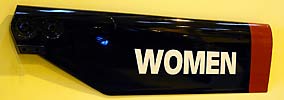 |
 |
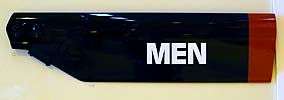 |
